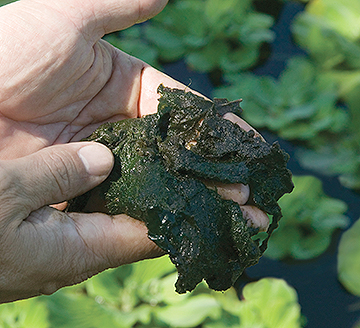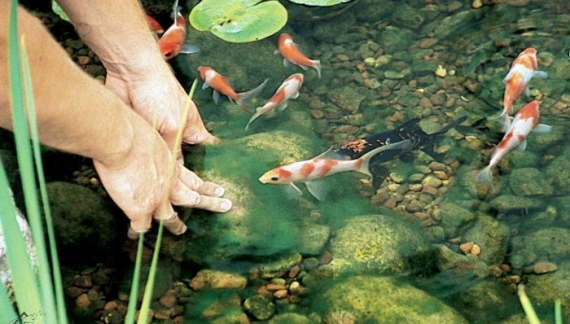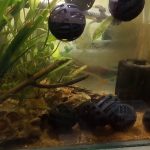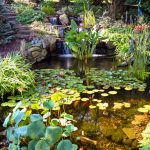Algae growth in ponds can be a common issue that pond owners face. Algae not only makes the pond water look unattractive but can also disrupt the overall ecosystem of the pond. Fortunately, there are various methods to effectively control algae in ponds and maintain a healthy and balanced aquatic environment.
Understanding Algae
Algae are simple, plant-like organisms that thrive in water bodies with an abundance of nutrients and sunlight. There are different types of algae, including green algae, blue-green algae, and string algae. While some algae are beneficial for the pond ecosystem, excessive algae growth can lead to water quality problems and harm aquatic life.

Credit: www.tetra-fish.com
Methods to Control Algae in Ponds
Controlling algae in ponds involves a combination of preventive measures and treatment options. Here are some effective methods to keep algae growth in check:
1. Balance The Pond Ecosystem
One of the key factors in controlling algae is to establish a balanced pond ecosystem. This includes maintaining the right levels of oxygen, sunlight, and nutrients in the water. Adding aquatic plants can help absorb excess nutrients that algae feed on, reducing their growth.
2. Reduce Nutrient Levels
Excessive nutrients like phosphorus and nitrogen can fuel algae growth. Avoid overfeeding fish and limit the use of fertilizers near the pond to prevent nutrient runoff. Installing a biological filter can also help remove excess nutrients from the water.
3. Provide Shade
Algae thrive in sunlight, so providing shade over the pond can help inhibit their growth. Planting trees or installing floating plants like water lilies can create shade and reduce the amount of sunlight reaching the water surface.
4. Mechanical Control
Manual removal of algae can be an effective way to control their growth. Use a pond skimmer or rake to physically remove algae from the water’s surface. Regular maintenance and cleaning can prevent algae from spreading and overtaking the pond.
5. Use Barley Straw
Barley straw is a natural and eco-friendly way to control algae in ponds. When barley straw decomposes in the water, it releases compounds that inhibit algae growth. Place barley straw bundles in the pond to help prevent algae outbreaks.
6. Algaecides
Algaecides are chemical treatments that can be used to kill algae in ponds. While algaecides can provide quick results, they should be used with caution as they can harm other aquatic life and disrupt the pond’s ecosystem. Follow the instructions carefully when using algaecides.
7. Beneficial Bacteria
Introducing beneficial bacteria into the pond can help maintain water quality and reduce algae growth. These bacteria break down organic matter and nutrients, limiting the food source available to algae. Beneficial bacteria products are available in liquid or granular form for easy application.
Preventing Algae Growth
Preventing algae growth in ponds is key to maintaining a clear and healthy aquatic environment. Here are some tips to help prevent algae outbreaks:
- Regularly test water quality and monitor nutrient levels
- Avoid overstocking fish in the pond
- Remove decaying organic matter from the pond
- Keep the pond well-aerated to promote oxygen levels
- Maintain a healthy population of aquatic plants

Credit: m.youtube.com
Conclusion
Controlling algae in ponds requires a combination of preventive measures and treatment strategies. By maintaining a balanced pond ecosystem, reducing nutrient levels, providing shade, and using various control methods, pond owners can effectively manage algae growth and keep their ponds healthy and thriving.
Remember that each pond is unique, so it may take some trial and error to find the most effective algae control methods for your specific pond. With patience and consistent maintenance, you can enjoy a beautiful and algae-free pond for years to come.





